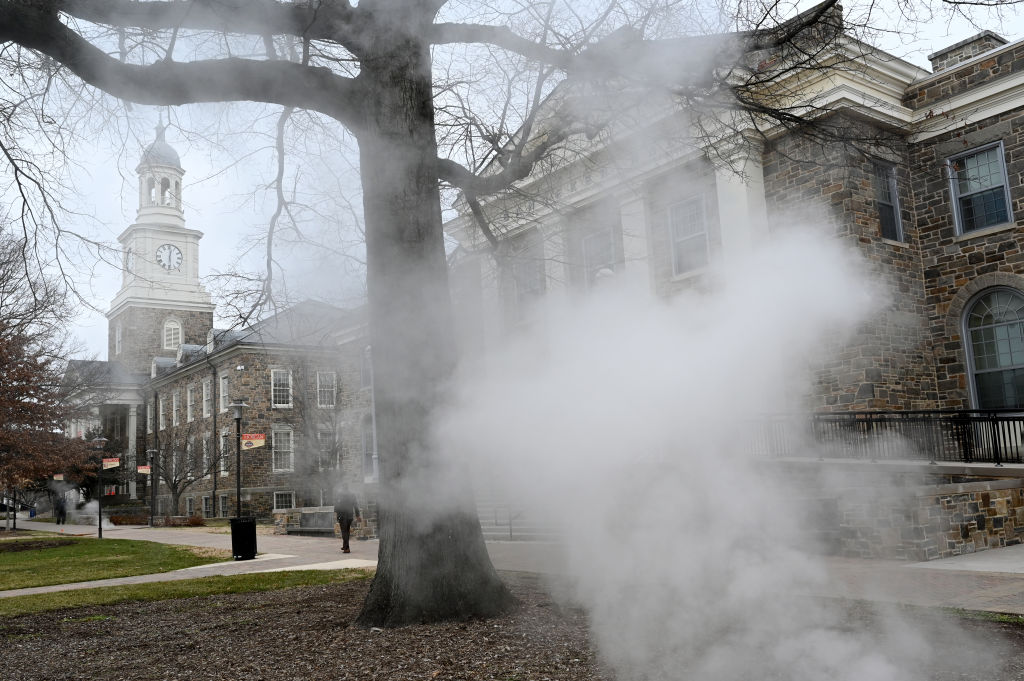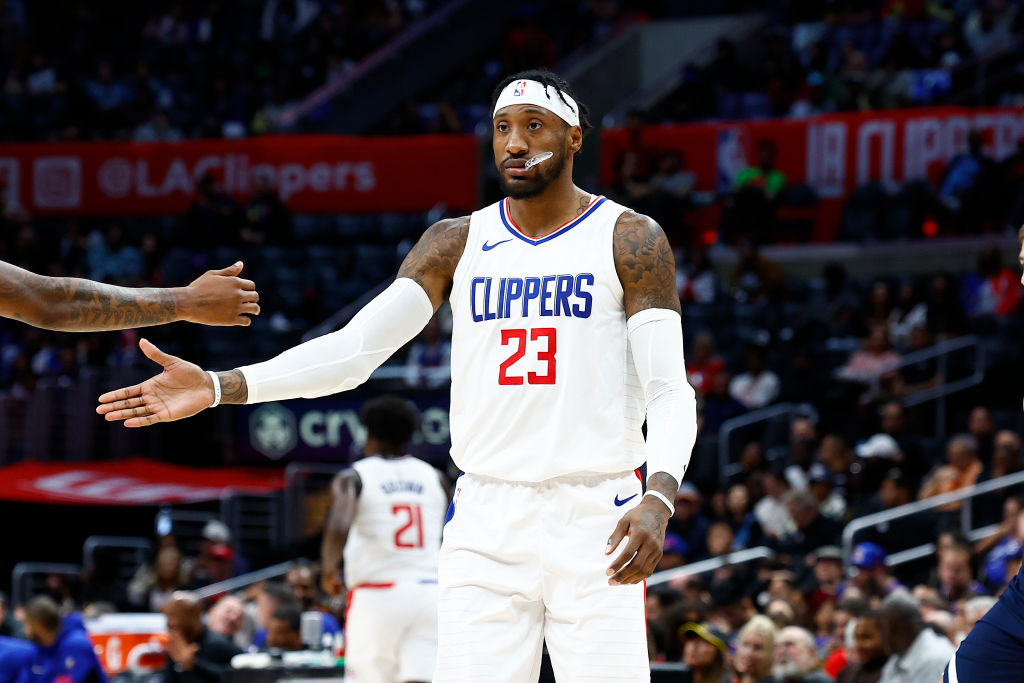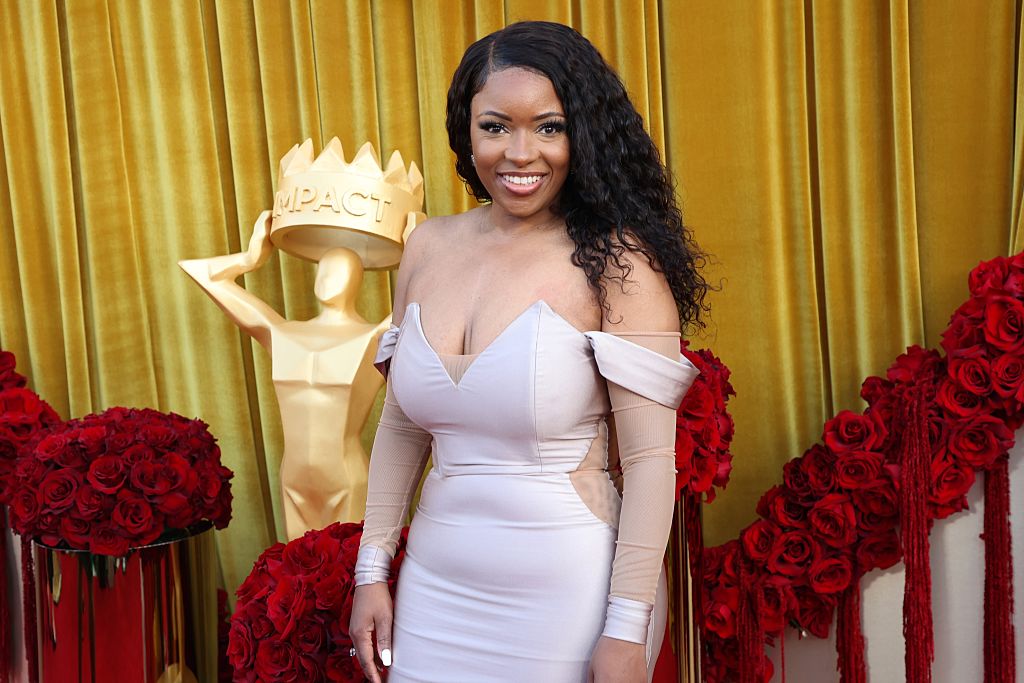HBCU Funding: Black College Students, Faculty 'Disadvantaged'
How The Underfunding Of HBCUs ‘Disadvantages’ Students And Faculty

The Academic Quad at Morgan State University including Holmes Hall, left, built in 1952, is seen February 7, 2022, in Baltimore, Maryland. | Source: The Washington Post / Getty
Historically Black colleges and universities (HBCUs) across the U.S. recently received over $2.7 billion in federal funding under President Joe Biden’s administration under the American Rescue Plan. However, some HBCUs remain vastly underfunded, with “a severe financial gap” dating back at least three decades. “These funds could have supported infrastructure and student services and would have better positioned the university to compete for research grants,” Education Secretary Miguel Cardona and Agriculture Secretary Thomas Vilsack wrote last month in letters addressed to 16 governors, urging them to invest more money in some HBCUs in their states to close the millions of funding gaps in these institutions—the underfunding of historically Black colleges and universities “disadvantages” students and faculty.
The underfunding of HBCUs “disadvantages” students. Even though HBCUs, including 1890 land-grant institutions, represent just 3% of postsecondary institutions and account for 10% of all Black college student enrollments, they have produced 80% of Black judges, 50% of Black lawyers and doctors, and 25% of Black graduates in science, technology, engineering, and mathematics. However, the American system, which is skewed against Black Americans, puts the future of millions of these Americans at risk through the systemic underinvestment in their education. For example, 16 HBCUs across the U.S. have been collectively underfunded by more than $12 billion within the past few decades. Despite their historical significance and the invaluable education provided by HBCUs, chronic underfunding has posed significant challenges. This financial disparity directly affects students grappling with subpar educational facilities and limited research opportunities. Consequently, upon graduation, some may find themselves at a disadvantage in comparison to graduates of predominantly white universities. Importantly, this disadvantage does not result from attending an HBCU but rather stems from the lack of resources and opportunities required for success.
It is crucial to emphasize that attending an HBCU should never be viewed as a hindrance to a student’s potential. The underlying issue lies in the unequal allocation of resources. With equitable funding and increased research opportunities, HBCU students possess the potential to compete just as effectively as their counterparts from predominantly white institutions in the job market. The root of the problem is not the students or the institutions they attend but rather the systemic inequalities that persist. It is time to recognize that with fair investment and support, HBCUs can empower their students to thrive and compete on a level playing field, ensuring that the promise of equal opportunity is fulfilled for all Americans, regardless of the color of their skin.
The underfunding of HBCUs “disadvantages” faculty as well. Inadequate funding at HBCUs leads to poor remuneration of staff, which is often the result of internal and external brain drain in these universities, a dearth of quality scientific research, and a lack of managerial capacities among staff in the universities. These issues have ripple effects on both staff and students. When Black graduates are offered low-paying entry-level jobs, receive little paychecks, or remain stagnant due to a lack of promotions, they contribute little or nothing to their alma maters, which build endowments through alumni donations. In 2020 alone, endowments at HBCUs averaged only $34 million, while the endowments of just 18 white land-grant schools averaged a whopping $1.9 billion, according to Forbes. Small endowments do nothing but adversely affect the payment of faculty salaries, student scholarships, scientific research, the expansion of academic facilities, and even the day-to-day operations at HBCUs. These issues’ effects on staff and students cannot be overemphasized.
While many people might argue that HBCUs have contributed little or nothing to the country’s economy and, therefore, do not deserve more funding, the fact remains that they are wrong. “Historically Black Colleges and Universities (HBCUs), Tribal Colleges and Universities, and Minority Serving Institutions make innumerable contributions to our country through the research produced by their faculty, [the] achievements of their students and alumni, and [the] services that they provide to the immediate community,” Cardona and Vilsack said in the letters. “Furthermore, these institutions generate close to $15 billion in economic impact and over 134,000 jobs annually in the local and regional economies they serve.”
“The longstanding and ongoing underinvestment” in these institutions, according to the duo, not only “disadvantages” students and faculty of the universities but also the “community that the institution serves.” That is why all hands must be on deck to increase funding for these HBCUs in the country, so we are “able to compete at a high level and develop the strong workforce that will propel this country into the future, generate the next wave of job creators, and fuel our economy,” as well as provide opportunities to “our students that we will be able to innovate beyond what we thought was possible just a few years ago and even today,” to put it more succinctly in the duo’s words.
As a proud alumnus of Alcorn State University and Jackson State University, I stand with the rich legacy of HBCUs nationwide. These institutions are beacons of hope, resilience and excellence. Despite enduring chronic underfunding, they continue to provide incredible opportunities to their students, thanks to the unwavering dedication of their faculty and the resilience of their student body.
However, it’s not enough to merely acknowledge their past and present achievements. It’s about shaping the future. Every dollar invested in HBCUs is an investment in America’s future. These institutions consistently produce the best and brightest minds, transforming them into leaders, innovators and trailblazers who contribute to our nation’s progress.
I passionately call upon my fellow HBCU alumni and all Americans to join the cause. Let us champion equitable funding, lend our time, donate generously and share our resources. Let our voices be the catalyst for change. By ensuring that HBCUs nationwide thrive, we ensure a brighter, more inclusive future for all. We must move beyond words and act to bridge the disparities that persist.
Stand with HBCUs—stand with all HBCUs—and together we can actively uplift the next generation of leaders. Let’s be bold in our commitment to action and make a resounding impact on countless students and the future of our great nation.
Duvalier Malone is the author of “Those Who Give A Damn: A Manual for Making a Difference,” a motivational speaker, community activist and CEO of Duvalier Malone Enterprises, a global consulting firm. He lives in Washington, D.C.
SEE ALSO:
What’s The Truth About Biden’s Commitment To HBCU Funding?
FAMU Students’ Lawsuit Over HBCU Funding Could Spark Movement Across Black Colleges
















